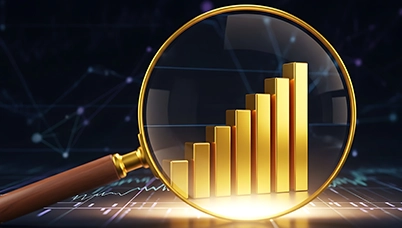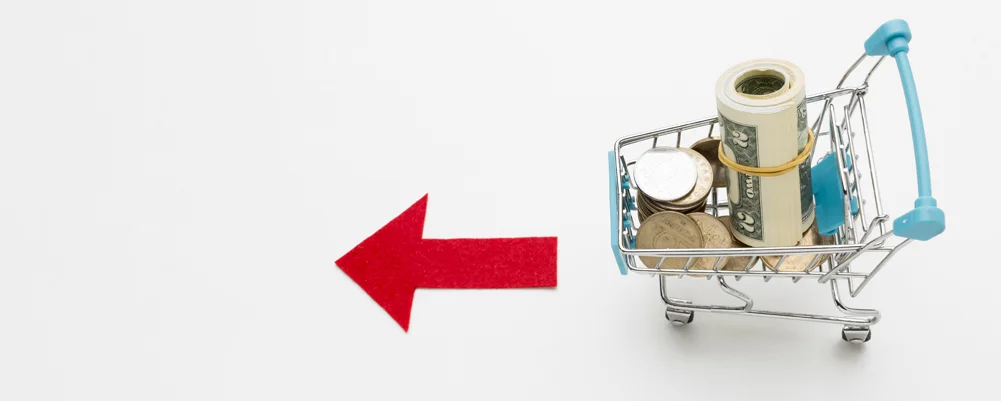Should you buy silver?
Posted On Tuesday, Nov 10, 2009
"Should we buy silver?" asked the email, "It is doing better than gold!"
Recently, due to its stupendous performance in the near term, there has been an increasing interest amongst investors to allocate money to silver.
Chart 1: Silver has done better than gold since October 2008

Source: Bloomberg
But, before you jump in and buy silver, let’s look at some more data considering longer time horizons.
Gold prices, in notional rupee terms, have increased to all time highs, making it seemingly "unaffordable" for investors to buy large quantities.
Investors wrongly argue that one kilo of gold costs more than Rs. 16, 00,000 whereas one kilo of silver costs "only" Rs. 27,000.
Therefore, silver - as the "cheap cousin of gold" - is much sought after these days.
The short term out-performance of silver vis-à-vis gold is leading investors to turn even more to silver.
Are Investors correct in their assessment?
Should they buy silver instead of gold?
Will it serve the same purpose?
Let’s delve a little into history to gain some insights that will help us reach a conclusion.
Two currencies
Silver, like gold, also has a history of being used as a currency - a medium of exchange.
What we commonly call as "money".
But, after getting de-linked as a form of currency, silver started being used more as an industrial commodity. This was mainly because of it’s important metallic properties as an element, which along with it’s abundant availability and lower cost, led to a spurt of usage of silver in varied applications.
As Chart 2 indicates, only 27% of silver is used for currency or coinage purposes (in the form of investments / jewellery). This means that 73% of the usage of silver is for its "non-precious" properties - for its industrial usage.
By contrast, 86% of annual gold consumption is used for currency or coinage purposes and only 14% of gold is used for industrial or dental applications.
Chart 2: Factories want more silver than the precious metal buyers (2008)

Source: World Gold Council
In this so called bull-run that started in 2001, gold prices have outperformed silver prices (Chart 3) albeit by a small margin.
Chart 3: Gold and silver are neck and neck since 2001

Source: Bloomberg
But keep in mind that this 9 year period encompasses an era (2004 to 2007) of strong global economic and industrial activity.
You can see (Chart 4 below) how the price of silver, used in industrial activity, did better than the price of gold from 2003.
Chart 4: A buoyant global economy from 2004 gave silver prices a boost

Source: Bloomberg
But take a look at the long term chart of gold and silver (Chart 5).
Chart 5: Silver and gold prices since 1973

Source: Bloomberg
As seen in the above chart, over a long term, gold has outperformed silver and more importantly by a considerable margin.
As of October 2009, an investment of $100 in gold would be worth $1,635 while an equal investment in silver would be worth $825 - about 51% of the value of the $100 invested in gold.
Also, in rupee terms, an investment of Rs. 100 in gold would be worth Rs.9,581 as of October, 2009, while an investment of Rs.100 in silver would be worth Rs. 4,835 - again a difference of about 51%.
Hence, an investment in gold has given you nearly 2x the return from a similar investment in silver in 1973.
Also, note that gold prices have moved beyond their nominal highs reached in 1980 whereas silver is still about 50% lower than its peak reached in 1980.
Is silver a combination of gold and copper?
In terms of price behavior, Silver can be best described as "Half gold, half copper".
Because like gold, the price of silver is based on its historic role of being used as a currency.
But, like copper, a significant part of the price of silver comes from its increasing role of being used as an industrial commodity.
From 2003 onwards, there was an uptick in economic activity which led to an increase in demand for industrial commodities.
Like copper and other base industrial metals, silver prices also saw a rapid increase.
Then in 2008, when a crisis hit the global economy, demand for industrial commodities (like copper) literally collapsed - and so did the prices of these industrial commodities.
Silver - because of its usage in industrial activity - saw a sharp decline in prices.
The expectation of a continued global economic recovery - has seen silver prices surge in the past few quarters.
So, should you invest in silver?
From an asset allocation perspective, gold is a better insurance for your portfolio.
If the world economy slows down, stock prices will head down.
Gold should maintain its value.
However, silver will have two diametrically opposite forces determining its price: the demand as an industrial metal (lower in a slowing economy) and demand for silver as a safe haven (higher in a bad economy).
An investment in silver is, in some sense, a play on global economic growth - but your equity shares already give you that exposure to the "upside".
Gold is a better portfolio diversification play and a better hedge as it will move less in tandem with global GDP activity.
Despite gold flirting with new peaks, we still recommend a 15% allocation of gold for your portfolio.
But, if you have missed out on the surge in the last 3 years, don’t rush in to buy all the gold you need in one day at these price levels.
Buy the gold you need over the next 36 months, maybe about 3% of your total planned allocation every month.
Gold should always be bought with a long term perspective - it has to be there for a 10, 20, 30 year time horizon. Some families have held it for centuries.
In conclusion, gold continues to be a sensible hedge for your long term portfolio against financial crisis, rising inflation, currency devaluation and declines in financial markets.
Invest in the Quantum Gold Fund and diversify your portfolio.
Click here to invest in the Quantum Gold Fund ETF
A Cheaper and Convenient way of owning High Quality Gold, Buy Now!
Disclaimer:
The views expressed in this article are the personal views of the Fund Manager of Quantum Gold Fund. The views constitute only the opinions and do not constitute any guidelines or recommendation on any course of action to be followed by the reader. This information is meant for general reading purpose only and is not meant to serve as a professional guide/investment advice for the readers. This article has been prepared on the basis of publicly available information, internally developed data and other sources believed to be reliable. Readers are advised to seek independent professional advice and arrive at an informed investment decision before making any investments. Please visit – www.quantumamc.com/disclaimer to read scheme specific risk factors.
Related Posts
-

Gold Monthly for December 2025
Posted On Thursday, Dec 04, 2025
After a series of events and a strong rally in October 2025, gold demonstrated a mixed performance in November 2025, moving back and forth within a defined range.
Read More -

Equity Monthly for December 2025
Posted On Wednesday, Dec 03, 2025
Markets continued the rising trend in October with Sensex gaining 2.2%.
Read More -

Debt Monthly for December 2025
Posted On Tuesday, Dec 02, 2025
As we approach the end of the calendar year, we find ourselves at a pivotal moment, with the market split on the likelihood of an upcoming rate cut.
Read More




